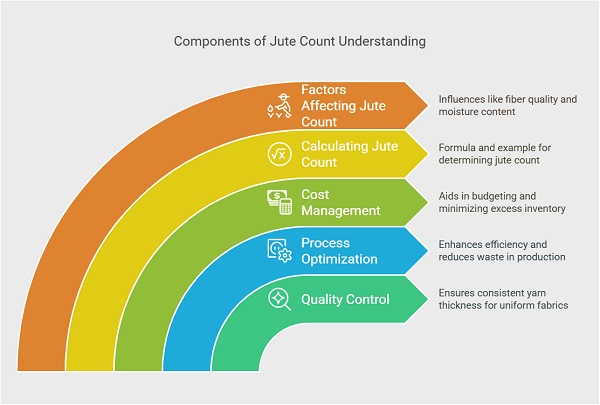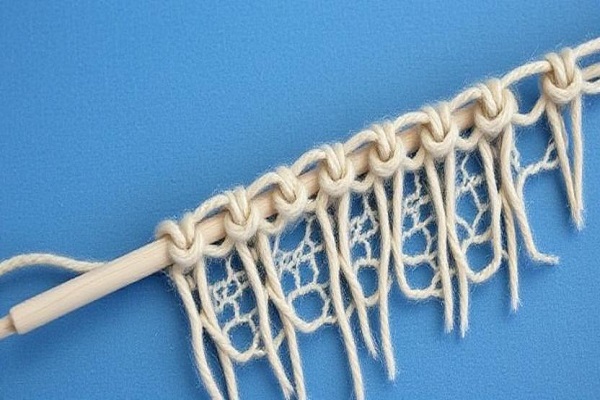Jute Count (lbs per spindle)
© Yarn Count Ltd
Disclaimer: All Tools in the Yarn Count have been reviewed by the relevant spinning industry experts.
The formula for Jute Count (lbs per spindle) Calculator
Jute Count=Weight (lbs) ÷ Length (spindles)
Where:
- Weight (lbs): The total weight of the yarn in pounds.
- Length (spindles): The total length of the yarn in spindles.
Table of Contents
Understanding Jute Count
In the textile sector, ‘count’ refers to the thickness or fineness of yarn. For jute, the count is typically measured in pounds per spindle. This unit denotes the weight in pounds of a specific length of yarn, with one spindle traditionally equating to 14,400 yards. Therefore, a jute count of 8 lbs/spindle means that 14,400 yards of that yarn weigh 8 pounds.

Importance in Textile Engineering
Accurate measurement of jute count is crucial for several reasons:
- Quality Control: Ensuring consistent yarn thickness is vital for producing uniform fabrics. Variations in jute count can lead to defects, affecting the fabric’s appearance and performance.
- Process Optimization: Knowledge of the exact jute count allows engineers to set appropriate machine parameters, enhancing efficiency and reducing waste during weaving or knitting.
- Cost Management: Precise jute count measurements help in calculating material requirements accurately, aiding in budgeting and minimizing excess inventory.
Calculating Jute Count

To determine the jute count in lbs per spindle, the following formula is used:
Jute Count (lbs/spindle) = (Weight in pounds × 14,400) / Length in yards
Example Calculation:
Suppose you have a jute yarn sample weighing 5 pounds and measuring 10,000 yards.
Jute Count = (5 lbs × 14,400) / 10,000 yards = 7.2 lbs/spindle
This result indicates that 14,400 yards of this yarn would weigh 7.2 pounds.
Factors Affecting Jute Count
Several factors can influence the jute count:
- Fiber Quality: The inherent properties of the jute fiber, such as its fineness and maturity, directly impact the yarn’s weight and thickness.
- Spinning Process: The techniques and machinery used in spinning can alter the yarn’s density, affecting the final count.
- Moisture Content: Jute fibers are hygroscopic, meaning they absorb moisture from the environment. Variations in humidity can change the yarn’s weight, influencing the count measurement.
Applications in Textile Manufacturing
Understanding and controlling jute count is essential in various manufacturing processes:
- Fabric Production: The jute count determines the fabric’s texture, strength, and suitability for different applications, from coarse sacks to finer upholstery materials.
- Product Development: Designing new jute-based products requires precise knowledge of yarn specifications to meet desired quality and performance standards.
- Supply Chain Management: Accurate jute count information facilitates better communication between suppliers and manufacturers, ensuring that raw materials meet the required specifications.
Challenges in Measurement
While calculating jute count appears straightforward, several challenges can arise:
- Inconsistent Fiber Properties: Natural variations in jute fibers can lead to irregularities in yarn thickness.
- Environmental Factors: Changes in ambient humidity and temperature can affect fiber weight and length, leading to measurement inaccuracies.
- Equipment Calibration: Ensuring that all measuring instruments and machinery are correctly calibrated is essential for obtaining accurate jute count readings.
Best Practices for Accurate Measurement
To achieve precise jute count measurements, textile engineers should consider the following practices:
- Standardized Testing Conditions: Conduct measurements in controlled environments where temperature and humidity are maintained at consistent levels.
- Regular Equipment Maintenance: Keep all measuring devices and machinery well-maintained and calibrated to industry standards.
- Sample Averaging: Take multiple samples from different batches and calculate the average jute count to account for any variations in fiber properties.
Conclusion
Mastering the concept of jute count in pounds per spindle is indispensable for textile engineers focused on jute manufacturing. It plays a pivotal role in quality assurance, process efficiency, and product development. By adhering to best practices and understanding the factors influencing jute count, professionals can ensure the production of high-quality jute products that meet both industry standards and customer expectations.